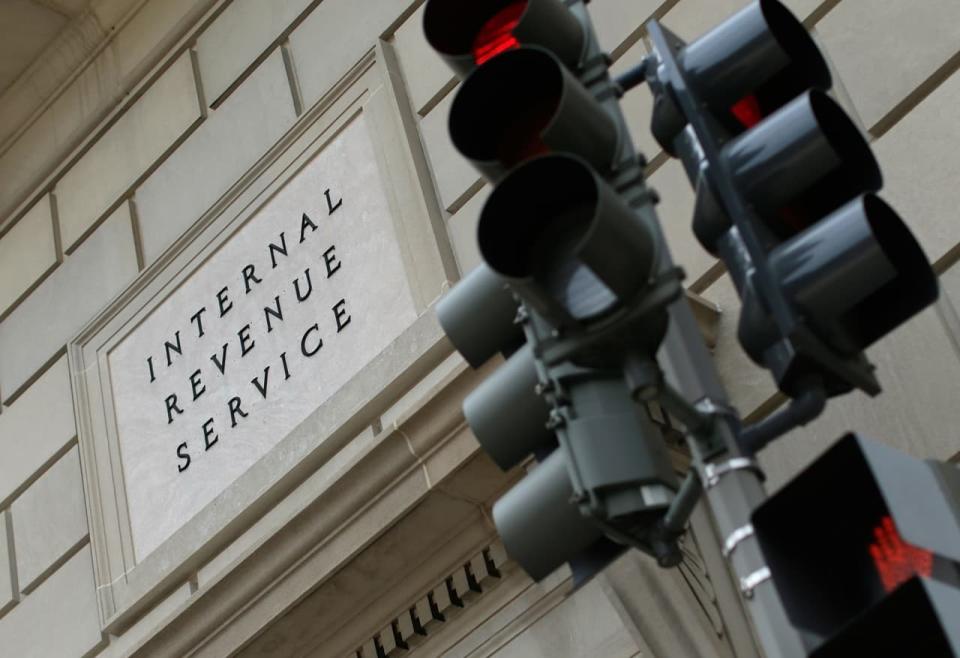IRS has made ‘limited progress’ figuring out audit rates for those making under $400,000, watchdog says

Two years after the Internal Revenue Service received billions of dollars to strengthen enforcement measures on rich taxpayers while keeping audit rates steady for most Americans, a new watchdog report says the agency still hasn’t settled on a way to count how many audits it makes below the crucial income threshold of $400,000 a year.
The report, released Thursday by the Treasury Inspector General for Tax Administration, said the IRS “has made limited progress” on developing its methodology and needs to move more quickly.
Most Read from MarketWatch
In response, the IRS said it still has time to finalize its approach, but agreed to move faster.
The tax collector said that while it’s still determining a technical point about audit rates, it has been using its extra funding in many other ways to focus enforcement on rich households without weighing on most taxpayers.
“As the IRS continues to work to formalize its methodology for audit-rate reporting, our focus on high-end enforcement will continue,” the agency said in a statement to MarketWatch, which emphasized that it is dialing up scrutiny on top earners but not on people making less than $400,000.
The agency pointed to a range of ongoing efforts, including a crackdown on millionaires behind on tax debts; wealthy households that didn’t file tax returns; questionable write-offs on corporate-jet use; and a new batch of audits for complex, large partnerships.
The TIGTA report focused on the IRS’s efforts to ensure that its additional funds aren’t used to hike audit rates on taxpayers making less than $400,000 — but there’s a longer backstory.
Two years ago, a Democratic-controlled Congress passed the Inflation Reduction Act, which earmarked $80 billion for the IRS over a decade. More than half that sum was meant to fund stronger tax oversight of corporations and rich households.
Republicans slammed the funding influx, warning it could turbocharge the taxman to scrutinize everyone. Treasury Secretary Janet Yellen issued a directive saying the extra money would not be used to increase audits on households and small businesses making under $400,000 “relative to historical levels.”
Approximately $20 billion of the $80 billion in funding was rescinded after 2023 negotiations to raise the debt ceiling.
The IRS picked tax year 2018 as its “base year” for income-tax returns. Now it’s determining the “audit coverage rate” for 2018 returns of up to $400,000 so that it can avoid exceeding that rate going forward.
To be sure, the IRS already slices audits into income segments. The percentage of audited 2018 tax returns with total positive income between $1 and $500,000 ranged from 0.2% to 0.4%, IRS numbers show.
The challenge is drawing the new $400,000 line — and it matters a lot, the report said. Over nine in 10 audits from 2019 to 2023 were focused on taxpayers with under $400,000 total positive income. Total positive income, the measure of income the IRS says it will use for the $400,000 threshold, is all the income reported on a return excluding losses.
One part of the challenge for IRS officials is finding a counting method that’s broad enough to encompass the sorts of returns from taxpayers who are making at least $400,000 but reporting income below that amount.
Tax officials considered excluding certain audits from the count, but TIGTA officials said that would give the IRS too much unclear leeway to pick and choose. The IRS dropped the idea to waive certain audits, the report said.
Another hangup is defining what counts as a “small business” for tax and audit purposes when creating the audit coverage rate, the report added.
The effort to avoid increasing audit rates on those making under $400,000, compared with historical levels, starts with 2023 tax returns. These returns were filed earlier this year and will not be examined until the federal government’s 2025 fiscal year.
The 2025 fiscal year starts in October, the watchdog report noted. “We believe the IRS needs to expedite the finalization of its plan to comply with the Treasury Secretary’s Directive,” the report said.
While the IRS works to determine the audit rate for those making less than $400,000, that income threshold may take on an even bigger role in tax policy.
Vice President Kamala Harris, the Democratic presidential nominee, has continued a pledge from President Joe Biden in saying that if she’s elected this November, she will not increase taxes on households making less than $400,000.
Former President Donald Trump, meanwhile, has pledged to extend his 2017 tax cuts if elected and possibly cut taxes lower.